
Arquivo para a ‘Museology’ Categoria
The historical analysis of theopoetry
No one will be converted by reading Sloterdijk,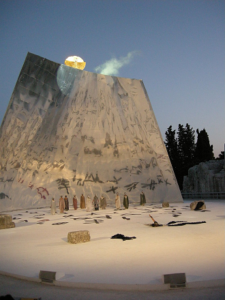 he calls the term religion “nefarious”, but the term not the culture he seeks to delve into, about the term he states: “… especially since Tertullian reversed, in his Apologeticum (197), the expressions “superstition (superstitio)” and “religion (religio)” against Roman linguistic usage: he called the traditional religion of the Romans superstition, while Christianity should be called “the true religion of the true god”. In this way, he produced the model for the Augustinian treatise De vera religione [On true religion] (390), which marked an epoch, through which Christianity definitively appropriated the Roman concept” (pg. 20) and its reasoning and historical vision is much more accurate than the one that wants to appear as if Constantine created a “religion”.
he calls the term religion “nefarious”, but the term not the culture he seeks to delve into, about the term he states: “… especially since Tertullian reversed, in his Apologeticum (197), the expressions “superstition (superstitio)” and “religion (religio)” against Roman linguistic usage: he called the traditional religion of the Romans superstition, while Christianity should be called “the true religion of the true god”. In this way, he produced the model for the Augustinian treatise De vera religione [On true religion] (390), which marked an epoch, through which Christianity definitively appropriated the Roman concept” (pg. 20) and its reasoning and historical vision is much more accurate than the one that wants to appear as if Constantine created a “religion”.
Historical because the influence on Augustine of the Neoplatonists, especially Plotinus, is not only reasonable, but strong enough for what he will write, not in Vera religione, but in his Confessions, which is practically his testament and model of his conversion, Augustine leaves Manichaeism (two opposing poles in dispute) to discover the One (Plotinus’ category), the religion of Love, which earned Hannah Arendt a doctoral thesis.
However, the political action of religion is not denied, Sloterdijk writes, citing Virgil’s Aeneid: “No imperialism rises without the current positions of the constellations in the temporal sky being interpreted, both in the case of those in power and those aspiring to it. Added to them are advice from the underworld: “Tu regere imperio populos, Romane, memento.” (pg. 26 quoting Virgil). In the figure above, Euripides’ representation of Medea from deus ex machina.
He is talking about cultural communities and quotes Constantine: “the symbolic or “religious” and emotional integration of larger units: of ethnicities, cities, empires and supra-ethnic cultural communities — the latter of which could also assume a metapolitical, or rather, anti-political character, as was clear in the case of Christian communities in the pre-Constantinian centuries” (pg. 25-26), when Christians were persecuted and this is history.
The church was already structured at this time: “The bishops (episcopoi: supervisors) were, in essence, something like praefecti (commanders, procurators) in religious attire; its dioceses (in Greek: dioikesis, administration) they resembled the previous imperial districts after the new subdivision made by Diocletius around the year 300; above all through them, the principle of hierarchy reached the ecclesiastical organization in formation…” (pg. 26), thus Constantine in 313 when he places the Catholic religion as the “official” religion [through the influence of his mother Helena] had little or almost no influence its structure.
In fact, in the Jewish heritage, it had already enshrined many rituals: “The mediological principle apò mechanès theós, in fact, deus ex machina, typical of scenic technique or religious dramaturgy, was in fact already in use in several Near Eastern rituals long before to emerge in the Athenian theater” (pg. 28), thus this “deus ex machina” was already present in Judaism.
The author recognizes the religious turn of Jesus: “The god-man, who called himself “Son of Man” inspired by Persian and Jewish sources — possibly a messianic title, but perhaps also just a fazn de parler [way of speaking] to “I” —, came into the world, as he himself was led to say, to sign his teaching with his life” (pg. 32), although he compares him with Socrates and Seneca who had “indispensable convictions”.
Sloterdijk, P. (2024) Fazendo o céu falando; a teopoesia (Making the sky speak: on theopoetry), Trans. Nélio Schneider, Brazil, São Paulo: ed. Estação Liberdade.
Acts of sabotage and opening of the Olympics
Hours before the opening of the Paris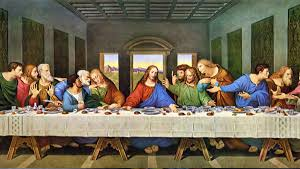 Olympics, several “acts of sabotage” were carried out in a “prepared and coordinated” manner, affecting France’s railway lines, French Prime Minister Gabriel Attal described the event, according to French sources, as “massive and serious” and thanked the firefighters and expressed indignation at the disruption to the movement of tourists and French people.
Olympics, several “acts of sabotage” were carried out in a “prepared and coordinated” manner, affecting France’s railway lines, French Prime Minister Gabriel Attal described the event, according to French sources, as “massive and serious” and thanked the firefighters and expressed indignation at the disruption to the movement of tourists and French people.
The opening ceremony had a strange message and without the beauty that always accompanied it in previous versions, Lady Gaga’s performance was recorded according to explanations “due to the rain”, a ceremony of trans people at a table seemed like an irony with the holy supper (that famous painting by Leonardo da Vinci) and a masked man who appears with the Olympic torch looks like a character from the Assassin’s Creed video games.
Also the white horse simulating riding on the water is something of enigmatic symbolism, perhaps the horse of the apocalypse or some allusion to war.
Except for the famous French song L’Hymme á l’amour by Edith Piaf, performed by Celine Dion, several French athletes paraded with the torch and lit the Olympic cauldron in a balloon, the lighting of which is maintained by an electrical system.
There was also a blackout on Saturday in Paris and the Olympic Committee itself, through the spokesperson for the Organizing Committee of the Paris 2024 Olympic Games: “we assume that we have crossed the line”.
The wars continue, the hope for peace increased since Russia for the first time admitted a return to the “Istanbul agreement” prior to the invasion of Ukraine.
The Just, wrath and serenity
Martino Bracarense, an author from the 5th  century AD who is little known but is one of those responsible for the days of the week in the Galician-Portuguese language Monday, Tuesday, etc., stated that “Anger transforms all things that are best and fairest into their opposite”, There are many philosophical, psychological and even poetic reflections on anger, William Shakespeare stated that: “Anger is a poison that we take waiting for the other to die” (the photo on the side is by Andre Hunder on unsplash).
century AD who is little known but is one of those responsible for the days of the week in the Galician-Portuguese language Monday, Tuesday, etc., stated that “Anger transforms all things that are best and fairest into their opposite”, There are many philosophical, psychological and even poetic reflections on anger, William Shakespeare stated that: “Anger is a poison that we take waiting for the other to die” (the photo on the side is by Andre Hunder on unsplash).
In stormy times, to maintain justice and serenity, a great effort of character and temperance is necessary because the normal thing is to react to the pain of hatred with some form, even if disguised as hatred, Aristotle stated: “a desire, accompanied by pain, to perceived revenge, due to a perceived disregard towards an individual or his neighbor, coming from people from whom disregard is not expected” (Aristotle’s Rhetoric).
What does accompanied (anger) by pain mean? This requires Aristotle’s definition of pathê: “emotions are all those things because of which people change their thoughts and disagree with their judgments, being accompanied by pain and pleasure, for example anger, pity, fear and all other things similar to their opposites”, is clearly not an exhaustive definition of anger, as it would require psychological and pathological elements and a more in-depth analysis of the topic.
The important thing is to know that it: escapes justice, produces intemperance and is placed in a sequence of structural hatreds, it ends up creating a total absence of serenity, of capacity for reflection and, in the end, it produces a great source of injustice and even even psychopathologies.
Another point is to think about the antidote to this state of mind, often cultural, structural and produced by those who believe they defend peace, of course in essence these same individuals are themselves pathological cases, because disguised anger, or as the popular saying goes “distilled poison”, unlike medicine, is not antithetical, it is poison in continuous and progressive doses.
Where then to find serenity? The answer is simple in hope, the very hope that waits, that breathes and that meditates and contemplates, a theme exhaustively elaborated in Byung-Chul Han in almost all of his themes, In the swarm where he exhorts “respect” as the only form of symmetry, silence and contemplation in “Vita Contemplativa” and the concept of affective tone in his work “Heidegger’s heart: about the concept of affective tone”, although he never sites the term directly, I think that is what he ultimately intends to contribute to contemporary thought to recover its ability to think, contemplate and Be.
The religious thought of our time also needs to recover more than serenity, sobriety, because they seem to be enveloped by certain intoxications of our time, as stated by Judeo-Christian thought, the wind came and God was not there: “after the earthquake there was a fire , but the Lord was not in it. And after the fire there was the murmur of a gentle breeze” (1 Kings 12) and the storm of Jesus among the sleeping apostles and a storm happening is also famous, He wakes up and tells the sea to calm down to the astonishment of the apostles (Mk 4,39).
The forgotten language of the Akkadians
Many narratives from the past were engraved on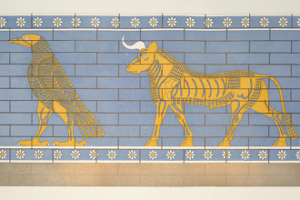 the walls, such as the famous Rosetta stone, it helped to spread the Syrian language, the Bible and its students (exegetists are a small part of the most orthodox interpreters of the Bible) we preserved Aramaic and ancient Hebrew, After a century of study, several researchers, including Irish researcher Martin Worthington, helped discover a mural of several found in excavations in the city of Dūr-Šarrukīn, in ancient Assyria and in present-day Iraq.
the walls, such as the famous Rosetta stone, it helped to spread the Syrian language, the Bible and its students (exegetists are a small part of the most orthodox interpreters of the Bible) we preserved Aramaic and ancient Hebrew, After a century of study, several researchers, including Irish researcher Martin Worthington, helped discover a mural of several found in excavations in the city of Dūr-Šarrukīn, in ancient Assyria and in present-day Iraq.
Historians identified a pattern on the wall repeated by a lion, a bird, a bull, a tree and a plow, but its meaning remained unknown.
Focusing on these studies, the professor at the School of Languages, Literatures and Cultural Studies at Trinity College, in Dublin, states that the images on our walls represent the name of King Sargon II and the constellations reinforce his imperial power at the time, with two first great western empires.
The Assyrian words two five symbols placed in the correct order would function as a sound that would give rise to the name “Sargon” (šargīnu), and would thus mean the power to stop King Sargon II and the historical period has great significance for much for the origin of Arab ancient cultures, such as Semitic and Akkadian, we have already posted here the Semitic extension and whose particularity with the Hebrews gave rise to the contemporary name of Semitic origin, but the Akkadians are not confused with this ancient origin.
They formed the first large centralized empire in the region, they predate the Babylonian period and hence their historical importance, the Semites were a distinct and educated people and did not mix with the numerous Semitic group of the time (Islamic, Jewish and Christian descended from this line). and the Akkadian empire dominated them for 180 years.
The name Semitic comes from Shem, son of Noah (the guy who built the ark) while the Akkadians remain unknown on this origin, but the mural is certainly Akkadian.
The mural also represents specific constellations, some familiar ones such as the constellations of Leo and Taurus, the bird represents Aquila, a constellation in the northern hemisphere, the plow would be named after an ancient Babylonian constellation, epinnu, today known as part of Andromeda and the Triangle Boreal.
The most controversial interpretation defended by Worthington argues that the tree in the Akkadian pronunciation is isu, similar to that of isu, the ancient constellation of the Jaw and thus would complete his analysis giving rise to the name of king Sargon II (šargīnu), Worthington is also known for helping in the current scripts for Marvel’s Eternals and Godzilla II: King of the Monsters and this makes it possible to understand his personality and taste for old narrations a little better.
“The effect of the five symbols was to place Sargon’s name in the heavens for all eternity – a clever way of making the king’s name immortal. And, of course, the idea of extravagant individuals writing their names on buildings is not unique to ancient Assyria,” says Worthington, so in Akkadian fashion the king devised a way to write on walls throughout the kingdom: “Sargon was here” and perpetuated his name in history, emperors and dictators always thought they were gods.
Experience, narratives and vision of the future
In the chapter that Byung-Chul Han deals with the poverty of the experience of modernity, remembering that it is not just about digital life as it predates it, he tells the fable of a man on his deathbed who tells his children that there is a treasure hidden in his vineyard (pg. 31), and after digging a lot, they finally understand that the vines in those lands produced more than any other (Han, 2023, pg. 31), in an important detail he explains that “it is characteristic of the experience that it can be narrated from one generation to the next” and this is what has been lost in the storytelling narrative.
the poverty of the experience of modernity, remembering that it is not just about digital life as it predates it, he tells the fable of a man on his deathbed who tells his children that there is a treasure hidden in his vineyard (pg. 31), and after digging a lot, they finally understand that the vines in those lands produced more than any other (Han, 2023, pg. 31), in an important detail he explains that “it is characteristic of the experience that it can be narrated from one generation to the next” and this is what has been lost in the storytelling narrative.
Narration presupposes tradition and continuity (Han, pg. 34) and it is this that “creates a historical continuum” while the poverty of experience is “animated by the pathos of the new” that “generalizes the new barbarity and transforms it into the principle of the new: Descartes belonged to this lineage of builders, who based his philosophy on a single certainty – I think, therefore I am – and started from it” (pages 34 and 35).
Paul Scheerbart reminds us that in his essay Glass Architecture “he talks about the beauty that would arise on Earth if glass were used everywhere” (pg. 38) and curiously, modern architecture is full of this “metaphor” (I also remember here the architecture (pg . 38), and they give a special aura as a means to the future, but as Han explains: “the future is an appearance of something far away” (page 39) that only the present cannot confer, this is a ‘feeling’. beginner”, which does not stay on the surface and which conceives a “different way of life”.
Exhausted late modernity is alien to the “beginner’s feeling” (page 40), “we profess nothing”, we are “comfortable” with convenience and like (idem), “information fragments time… reduced to a strip narrow view of current things”, I would add that we do not have reading, knowledge and reflection on previous things that made the history of culture and knowledge itself, not reduced to the Cartesian fraction of reason.
We are in a culture of “problem solving… in the form of compressed time” (page 41), but the author does not let slip a vision of the future: “life is more than solving problems… those that only solve problems no longer have a future… the narration reveals the future, only it gives us hope” (page 41).
The narrative is present in the background of different cultures, from religious to social and political, people built them more than their rulers and emperors who succumbed to them, Napoleon did not leave an imperial France, but a resigned one, Bismarck and Hitler did not leave a superb Germany, but knowing where philosophy found its roots, the colonial submission of the Americas and Africa, in the East there are still lapses of colonialism, leaving peoples more fighting and in search of their own narration, there is life beneath the dust that dictators and colonizers wanted to reduce us, I also remember the Eastern and Western cultures of religious narration, they are no less important, they support them.
Of course, there is also storytelling in this environment, false prophets and “pastors” who seek religious enslavement, but the biblical and oriental teaching is different and as it is a narration it cannot be confused with stereotypical and segmented reading, they also suffered from Cartesianism and idealism, when these “fake religious people” who demand a “modern narrative” that takes account of current storytelling.
Already at that time, Jesus was being asked about the existence of eternal life. He remembers the burning bush passage in which Moses had spoken directly to God (Mc 1,26): “As for the fact of the resurrection of the dead, have you not read in the book of Moses, at the burning bush, how God said to him: ‘I am the God of Abraham, the God of Isaac and the God of Jacob’?” and instead of denying the ancient narrative, it reaffirms that it is part of the tradition and that a new reality was already being written there.
Han, B.C. (2023) A crise da narração. Transl. Daniel Guilhermino. Brazil: Petrópolis, Vozes.
Violence , manipulation and resistance
Edgar Morin asked in an interview that when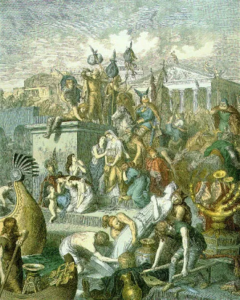 faced with a situation of polycrisis, we face it with resistance of the spirit, strength of character, opposition to hatred and opposition to small dishonest acts, but the most difficult thing is spiritual resistance, the narratives that go from politics and religiosity.
faced with a situation of polycrisis, we face it with resistance of the spirit, strength of character, opposition to hatred and opposition to small dishonest acts, but the most difficult thing is spiritual resistance, the narratives that go from politics and religiosity.
Clarifying as we did in the previous post, that when using Walter Benjamin who passed away in the 40s, what he was mentioning was about the press being concerned with hot news and not always thinking and digesting in depth the “slowness” as proposed by Byung-Chul Han the facts of reality, says Byung-Chul: “Digitalization sets in motion the process that Benjamin, due to his time, could not predict… associates information with the press. The press is a means of communication that follows narration and romance” (Han, pg. 27), remembering that it is the romantic vision that begins a process of death of narration.
We had already mentioned in previous posts Karl Kraus (1874-1936), an Austrian poet and journalist who was a strong opponent of the 1st. world war, a spirit of resistance of the time, alerted the boiling nationalist and militarist ideas, of which the press was a partner, and saw in war a manifestation of humanity’s collective madness.
In times of spiritual emptiness, it is very common for a warlike and passionate spirit to grow, there is no shortage of exalted spirits without any reflection in all media, the order is to promote disorder, the moral order is to promote the immoral, this madness feeds on warlike and sick spirits, they need collective madness for their war madness to thrive.
In an even earlier period, the [disordered] information regime stated George Büchner (1813-1837), quoting Byung-Chul: “we are puppets, whose strings are pulled by unknown powers; we are nothing, nothing ourselves” (Han, 2023, pg. 29), now “the powers are becoming more subtle and invisible, so that we are no longer aware of it. We even confuse it with freedom” (Idem).
The poverty of the narration experience, also pointed out by Benjamin and cited by Han: “what happened to all this? Who still finds people who know how to tell stories the way they should be told?” (Han, 2023, pg. 31), there is certainly no neutrality, but between two warlike forces a power of resistance is possible that denounces them.
In biblical reading, give to Caesar what belongs to Caesar (Mc 12,16-17): “They took the coin, and Jesus asked: “Whose figure and inscription are on that coin?” They replied, “Caesar’s.” Then Jesus said, “Render therefore to Caesar the things that are Caesar’s, and to God the things that are God’s.” And they were amazed at Jesus, because it was not an allied act but rather showing which side the power is on and which side are the peaceful men who truly want the common good of all.
After countless alliances with the Pharisees, in the year 70 AD the Roman Empire destroyed the second Jewish temple and whose reconstruction they dream of to this day, both lost, the Roman Empire also fell in the year 476 to the German leader Odoacer , the barbarians had already undermined the political, financial and military power of the Empire (in the photo the Visigoths sacking Rome).
Han B.C. (2023) A crise da narração (The crisis of narration). Transl. Daniel Guilhermino. Brazil, Petrópolis, RJ: Vozes.
Asceticism and social ascension
The idea of ascension is linked to growth on the social scale, but this type of ascension does not refer to asceticism, that which morally and virtually (in terms of virtue) someone elevates.
social scale, but this type of ascension does not refer to asceticism, that which morally and virtually (in terms of virtue) someone elevates.
The idea of access to social goods and public visibility is also not linked to asceticism, we live in a time in which social notoriety through modern digital media resources, advertising and the cultural industry have existed since the beginning of the last century, does not indicate a spiritual and moral asceticism, often being exactly the opposite (in the photo Philosopher in Meditation by Rembrandt, 1632).
The times of education for sociability, empathy and the common good are distant, now there is a confusing scenario where public visibility is mixed with sociability, empathy with modern mythology, there is no space for depth of thinking, or for astonishment. If faced with dark facts, everything seems to become a meme and reason for bad politics and bad social practices of polarization often justified only by “us against them”.
It is almost impossible to talk about asceticism in such a strange and exotic universe, not to say something more serious, it is not a question of returning to children’s stories with moral lessons or fantasy stories of kindness and innocence in a difficult and competitive world, this is also harmless However, if we do not rise spiritually we become worse and less humanized every day. An asceticism that takes us to a higher level of civilization is not only desirable but also makes the civilizing process possible and more fruitful for everyone.
When talking about a despiritualized asceticism, Peter Sloterdijk highlights the “exercise society” that is more destined for tension and competition than for leisure and human and social progress for all, also Edgar Morin when talking about resistance of the spirit, talks about a stance of hope contrary to the social polycrisis we are experiencing.
The reading we are doing of Heidegger read by Byung-Chul Han, penetrates this spirit: “Modern man”, the consumer of beings, staggers because of his “drunkenness of experiences” (pg. 243) from one unusual thing to another , it lacks the ascetic look of “astonishment” (pg. 244), that is, not acquiring anything unusual as fact.
This look of amazement that comes from Aristotle’s philosophy, capable of capturing our attention in the “untrodden space between” (pg. 246) that is capable of reviewing the “middle”.
There is a “suffering” in this that is an imprisonment of “not knowing how to get in or out” (pg. 247) and in such suffering there is a correspondence with what must be captured, what must be learned where “thinking is a capturing that suffers” worked by Heidegger to allow man to think between beings, which takes the affective tone.
When also criticizing the child’s astonishment, which he calls the first beginning, he emphasizes that he is not in this first house: “sustained breathing can mean the trans-epochal a priori of thinking”, (pg. 249).
Byung-Chul remembers that Lévinas dedicates his “main work” (as he considers it): autrement qu’etre or au-delà de essence (beyond being or beyond essence) to astonishment, which frees the imprisonment of the self to the in-itself (a category dear to Hegel), which places the self in “a passivity that is more passive than the passivity of matter” (pg. 250, citing Lévinas).
Although he recognizes that there is this astonishment in postmodernism, Lyotard reminds us (Das inhumane, pg. 163) quoting Boileau in “The sublime and the avant-garde”, the “sublime is, strictly speaking, nothing that can be proven or shown, but something wonderful that grabs, that shakes and that moves with sensitivity”.
He concludes this chapter, which he called “The Sustained Breath”, that “astonishment imposes silence on the subject and his work of synthesis”, and concludes: “It is a breath of thought that perseveres before synthesis, without stopping thinking” ( p. 252).
Han, B.C. (2023) Coração de Heidegger: sobre o conceito de tonalidade afetiva em Martin Heidegger (Heidegger’s heart: on the concept of affective tonality in Martin Heidegger). Transl. Rafael Rodrigues Garcia, Milton Camargo Mota. Brazil, Petrópolis: Vozes.
Medieval empires and the sunset
Roman civilization already existed, but as an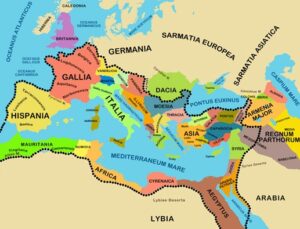 empire it began in 27 BC when the Senate and People of Rome proclaimed Octavian prince, which in the original meaning is “first citizen”, and as such should be venerated and the conquest of different territories.
empire it began in 27 BC when the Senate and People of Rome proclaimed Octavian prince, which in the original meaning is “first citizen”, and as such should be venerated and the conquest of different territories.
The Roman Empire lasted until 476 BC, when Romulus Augustus was dethroned by the Heruli, who were the Germans, but who came from further north and, according to some historians, originated in Scandinavia.
A little-known historical fact is that it was after the death and crucifixion that Rome finally dominated and subjected the Jewish people, the troops of General Titus took the city of Jerusalem on September 8, 70, the Temple that had been built by Solomon (970 BC) is set on fire and the inhabitants are deported as slaves.
In the underground of the Roman Empire there lived several people who, despite being subjected, maintained their culture and spirit, and among these people were the Christians who grew in number and the apostles were esteemed by the entire community.
What connects the people and their own cultures, was the solidarity and the spirit of love that existed between them, unlike what happens today where there is division between the people themselves, the unity between the communities was strong, and the idea of states also grew from the republican vision of Plato and Aristotle, but the imperial vision and wars remained.
If these empires and wars can really be thought of as a dark time, in the monasteries and small agrarian communities where life continued to flourish, both the civilizing process and the preservation of their original cultures, it is also from the end of this period that the Turkish-Ottoman empire , in addition to being one of the longest in history, from 1299 to 1923, a period that included other empires in Europe such as the Carolingian from 800 to 888.
They all suffered decline due to their internal contradictions, the always oppressive and warlike spirit that may seem to be the driving force of history, but it is precisely the opposite, cultures survived despite these desires for submission and oppression of different peoples.
There is always hope and life for those who remain towards human civilization.
Modern empires and work
The beginning of modernity marked a rupture between the practical world, objective of reason, called objective by idealism, and a sensitive world, of love, hope and balanced life, where human nature can express itself and develop, called in an incorrect way of subjectivity (which would be typical of the subject).
between the practical world, objective of reason, called objective by idealism, and a sensitive world, of love, hope and balanced life, where human nature can express itself and develop, called in an incorrect way of subjectivity (which would be typical of the subject).
There were many authors who from the beginning of the 20th century began to question this division of man into vita activa and vita contemplativa, Hannah Arendt and currently Byung Chul Han are the most remembered, however the idea of contemplation comes from antiquity, from Stoics and of some mystics studied in Patristics, such as Gregory of Nazianzus, (329-390) one of the masters of contemplation being cited by Chul Han.
The word work comes from tripalhium, it arises from medieval tortures that allude to removing the “guts” from the continuous effort without rest that will mark the beginning of the industrial revolution until the achievement of the limit of working hours and some minimum laws of respect for life human.
In the Middle Ages, it was in monasteries that the first crafts, cooking techniques (such as sausages made to preserve meat) were born, and also libraries and copyists who began contemplative human work (it is not subjective), such as motto among Benedictine monks: ora et labora (meditate and work).
It is good to remember that the heavy work until the emergence of monasteries was done by “free” men and that many monks had noble origins and went to the monastery to learn how to work and also to read and write because a large part of humanity at that time was illiterate, and the prevention of myopia and hyperopia must also be remembered, as glasses and lenses date back to the end of the middle ages.
After the conception of modern industry and the state, which is also the boss of state-owned companies, monopolies in socialist countries, which are no different in demanding efficiency and maximum effort, imprisoning man in the “vita activa” with no space to be and develop their full life, with space for meditation and leisure.
Already in the English industrial revolution, Gin (which is the pinga in Brazil) moved the maximum capacity of modern industrial slaves deprived of domestic life, leisure and culture.
What the post-industrial, post-modernist society will be is still unknown. For now, the empires want a monopoly on the productive forces to guarantee power over the workforce and not give freedom for full human development, full life is postponed.
The great divine gift that is life and living it in abundance will depend on great changes, empires fight to ensure that this does not happen, although they say it is for freedom.
The great empires in antiquity
There is always a historical and a biblical narrative, the dates coincide, but the battles do not.
narrative, the dates coincide, but the battles do not.
One of the great empires of antiquity was Assyria, from the 7th century BC (approximately 721 BC until the 630th century BC. the beginning of its fall, they dominated a large part of Arabia, conquering the Babylonian lands, which dominated the Hebrew people and the Chaldeans, Egypt, the Medes and Elamites.
The biblical narrative focuses mainly on the period of Sargon and Sennacherib (745-661 BC) and it is from this time that the prophet Isaiah narrates the words of Sennacherib to Hezekiah: “this is what you will say to Hezekiah: Thus speaks the great king, the king from Assyria where so much Confidence comes from, the king mocks him for the alliance he had with Egypt and will also conquer that people.
In Isaiah 37, there is the following narrative about the years of suffering, followed by victory, “this year they eat stubble; next year, what is born alone; But in the third year I will plant and you will reap; you will plant vineyards and eat their fruit” and then further on he narrates a battle in which “the angel of the Lord appeared in the Assyrian camp and struck down eighty-five thousand men”, even today a very high number.
What is certain is that in the year 630 BC the Assyrians retreat from Egypt and then from Babylon, which will also dominate the Hebrew lands in Isaiah 39, initially the king of Babylon, Merodach-Baladan, sends messages and gifts to King Hezekiah, who was ill. , but then the prophet Isaiah warns King Hezekiah: “Listen to the word of the Lord of hosts! The time is approaching when everything that is in your palace, everything that your fathers have accumulated until this day, will be taken to Babylon”, and so it happened during the 50 years of the Babylonian exile.]
Who freed the Jews. It was King Darius, who ruled the Persian Empire and who was an enemy of Babylon, through the prophet Daniel, whom he venerated for his prophecies, granted the Jewish people to rebuild their temple and return to their land.
The Persian empire lasted until 330 BC and is well known in official historiography because of the “medical” wars between the Greeks and the Persians, but see that historically the Medes were a people to the east of Assyria, while the Greeks to the west and already on the European continent, it turns out that they were simultaneous in the period from 500 to 448 BC for more than 50 years.
Between wars and challenges, oracles and prophets helped the people to walk through these periods.
The possible historical lesson is that great empires fell due to their pride and oppression, the spiritual lesson is do not let your heart be intimidated, evil dies by its own evil.

